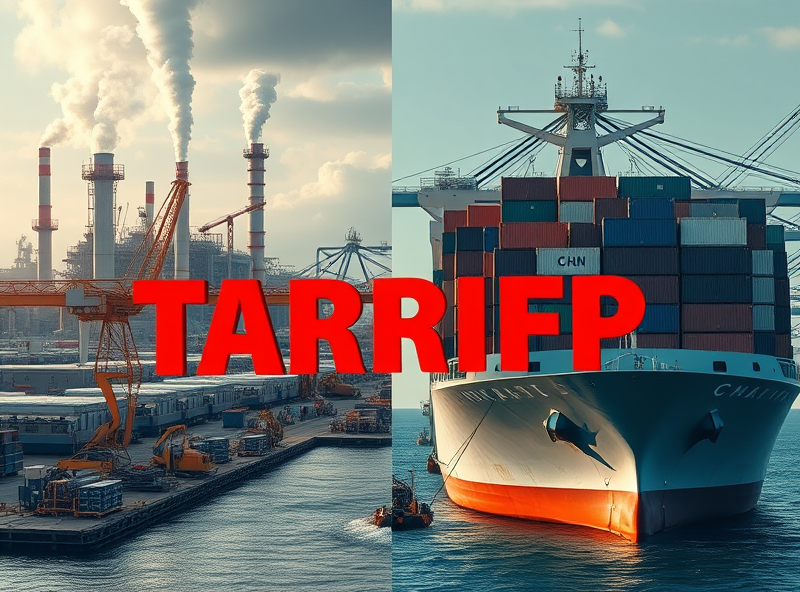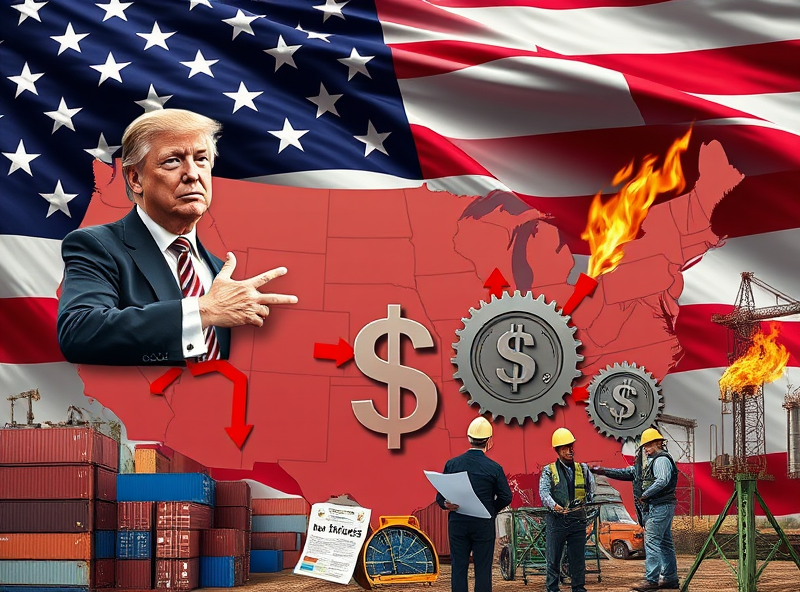Trump’s Economic Policy Changes: Trade, Taxes, and More
Trade Tariffs and Protectionism

One of the most talked-about aspects of former President Donald Trump’s economic policy was his strong stance on trade. His administration implemented a series of trade tariffs aimed at protecting American industries from foreign competition, particularly targeting countries like China. These tariffs were designed to encourage domestic manufacturing and reduce the U.S. trade deficit.
While the idea of protecting local jobs sounds appealing, the reality is a bit more complex. Tariffs often lead to higher prices for consumers, as imported goods become more expensive. For example, American companies that rely on imported steel or aluminum saw their costs rise, which sometimes led to increased prices for everyday products like cars and appliances.
However, for some industries, especially those struggling to compete with cheaper foreign goods, the tariffs provided a much-needed lifeline. They allowed certain sectors, like U.S. steel and aluminum, to stabilize and even grow in the short term.
Understanding trade tariffs and protectionism is important because they directly affect the prices we pay, the jobs available in our communities, and the overall health of the economy. As consumers and citizens, being informed helps us make better decisions and participate more meaningfully in discussions about economic policy.
In summary, while protectionist policies like tariffs can support local industries, they also come with trade-offs. It’s all about finding the right balance between protecting jobs and keeping goods affordable. Staying informed empowers us to better understand how these policies shape our everyday lives.
Major Tax Cuts and Fiscal Deficits

During Donald Trump’s presidency, one of the most significant economic policy changes was the implementation of major tax cuts through the Tax Cuts and Jobs Act (TCJA) of 2017. This legislation aimed to stimulate economic growth by reducing the corporate tax rate from 35% to 21%, offering tax relief to individuals, and encouraging business investment.
For many Americans, these tax cuts meant more take-home pay and increased incentives for businesses to expand and hire. However, it’s important to understand the broader impact. While the tax cuts did provide short-term economic boosts, they also contributed to a significant increase in the federal deficit. According to the Congressional Budget Office, the TCJA added an estimated $1.9 trillion to the national debt over a decade.
Why does this matter to you? Well, fiscal deficits can affect long-term economic stability. When the government borrows more, it can lead to higher interest rates and reduced public investment in essential services like education and infrastructure. For individuals, this could mean fewer public resources and potential tax increases in the future to cover the growing debt.
Understanding the balance between tax relief and fiscal responsibility is key. While tax cuts can provide immediate financial relief, it’s wise to stay informed about how these policies shape the economy and your financial future. Being aware helps you make better decisions in budgeting, investing, and even voting.
In short, Trump’s tax cuts were a double-edged sword—offering benefits in the short term but raising concerns about long-term fiscal health. As always, knowledge is power, and staying informed empowers you to navigate the economy with confidence.
Deregulation in Key Industries

One of the most notable aspects of President Trump’s economic policy was his strong push for deregulation across several key industries. His administration aimed to reduce what it considered excessive government oversight, arguing that cutting red tape would stimulate business growth, create jobs, and boost the overall economy.
In sectors like energy, finance, and telecommunications, deregulation meant rolling back rules that businesses claimed were burdensome. For example, in the energy industry, lifting restrictions on oil and gas drilling opened up new opportunities for domestic production. This not only supported energy independence but also led to job creation in rural areas.
In the financial sector, the Trump administration eased some of the Dodd-Frank regulations that were put in place after the 2008 financial crisis. While critics warned this could increase systemic risk, supporters argued it allowed smaller banks to lend more freely, helping small businesses and local economies.
For everyday Americans, these changes had mixed effects. Some enjoyed lower energy prices and more job opportunities, while others expressed concern about environmental and consumer protections being weakened. It’s important to understand how deregulation can influence your daily life—from the price you pay at the pump to the safety of your financial investments.
Whether you agree with the approach or not, staying informed about how deregulation affects industries you rely on can help you make smarter financial and lifestyle decisions. Always consider both the short-term benefits and long-term consequences when evaluating such policy shifts.
Labor Market and Immigration Policy

When discussing Trump’s economic policy changes, one area that deeply impacts everyday Americans is the labor market and immigration policy. These two elements are closely connected, and shifts in either can influence job availability, wages, and economic growth.
During his presidency, Donald Trump implemented stricter immigration policies, including reduced visa programs for skilled and unskilled workers. While the goal was to protect American jobs, the outcome was more complex. Many industries—such as agriculture, construction, and tech—rely heavily on immigrant labor. Limiting this workforce led to labor shortages in some sectors, which in turn increased operational costs and slowed productivity.
On the other hand, some argue that tighter immigration controls helped raise wages for low-skilled American workers by reducing competition. However, economists often point out that immigration tends to complement, rather than replace, native labor, especially in a growing economy.
For job seekers and small business owners, understanding these dynamics is essential. If you’re in an industry affected by labor shortages, you may need to adjust hiring strategies or invest in automation. If you’re a worker, it’s helpful to know which sectors are expanding and where new opportunities may arise due to shifting labor trends.
In short, immigration policy changes can have ripple effects across the economy. Staying informed helps you make smarter career and business decisions in a changing labor landscape.






